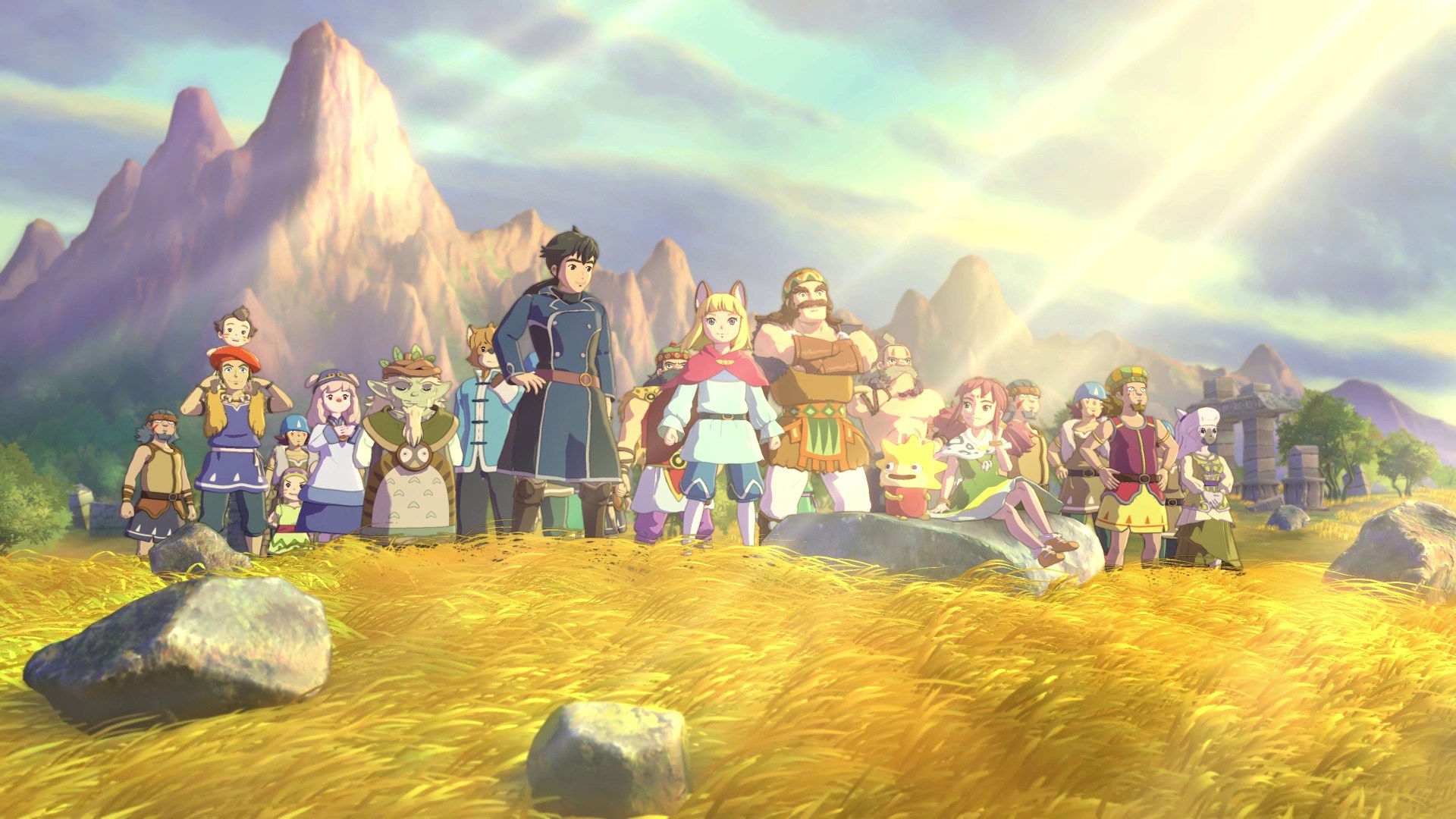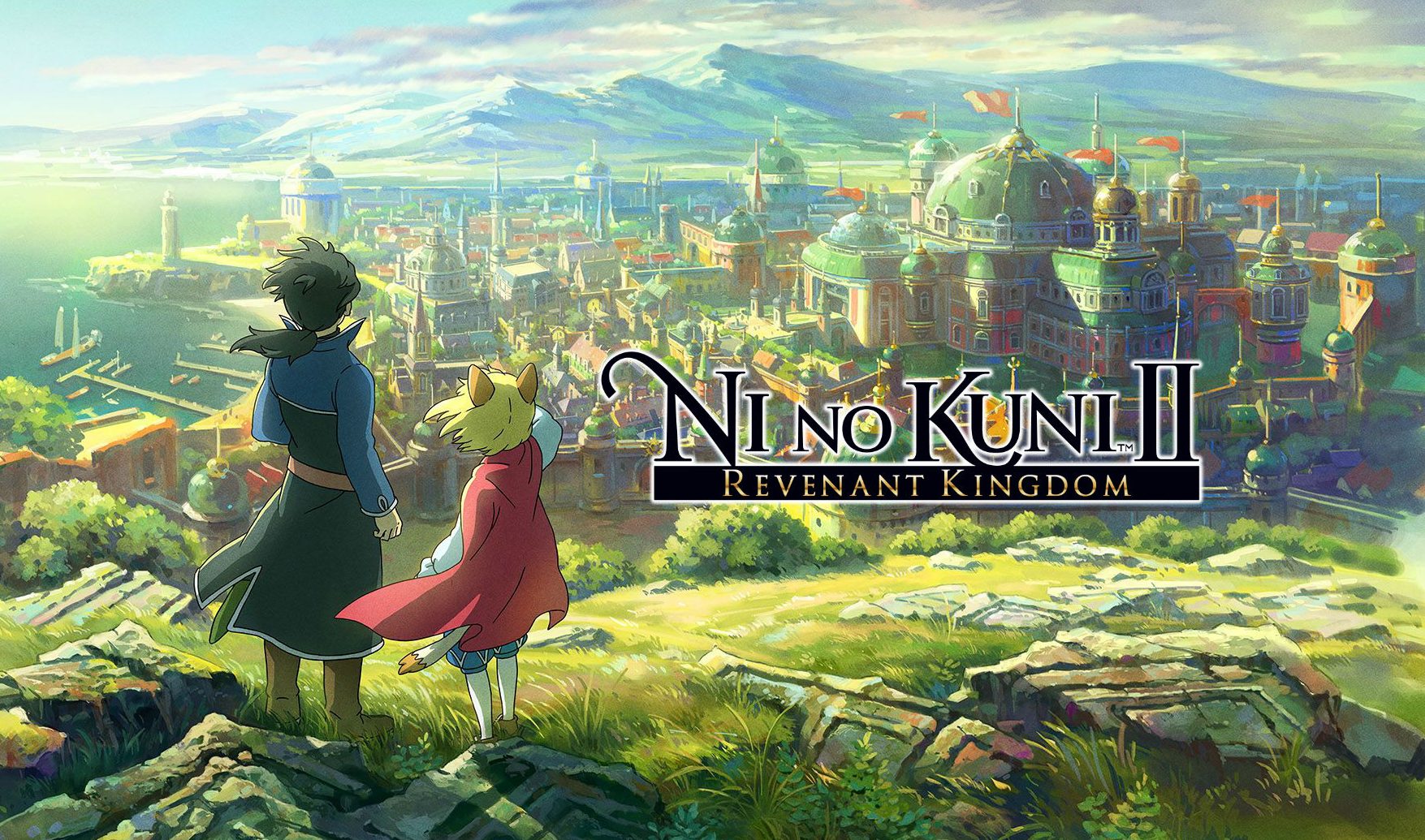
Ni no Kuni: Wrath of the White Witch had a wonderful story, unique presentation, and a memorable soundtrack, making it stand out as one of the best role playing games on the PS3. It was truly something special, being made in collaboration with the famed Studio Ghibli.
Despite the return of writer Akihiro Hino and composer Joe Hisaishi, the departure of collaborator Studio Ghibli raises the question if Ni no Kuni 2: Revenant Kingdom will be as special as the first.
Ni no Kuni II: Revenant Kingdom
Publisher: Bandai Namco
Developer: Level-5 Inc.
Platform: PC (Reviewed), PlayStation 4
Release Date: March 23th, 2018
Players: 1 Player
Price: $59.99
The kingdom of Ding Dong Dell faces a coup d’etat lead by the fallen king’s most trusted adviser, aimed at overthrowing the would-be king, Prince Evan Pettiwhisker Tildrum. Evan is aided by Roland, a man from another world he successfully escapes. Confused, and without a home, Evan sets out on his mission: to create a new kingdom where peace can be achieved, and war will be a thing of the past.
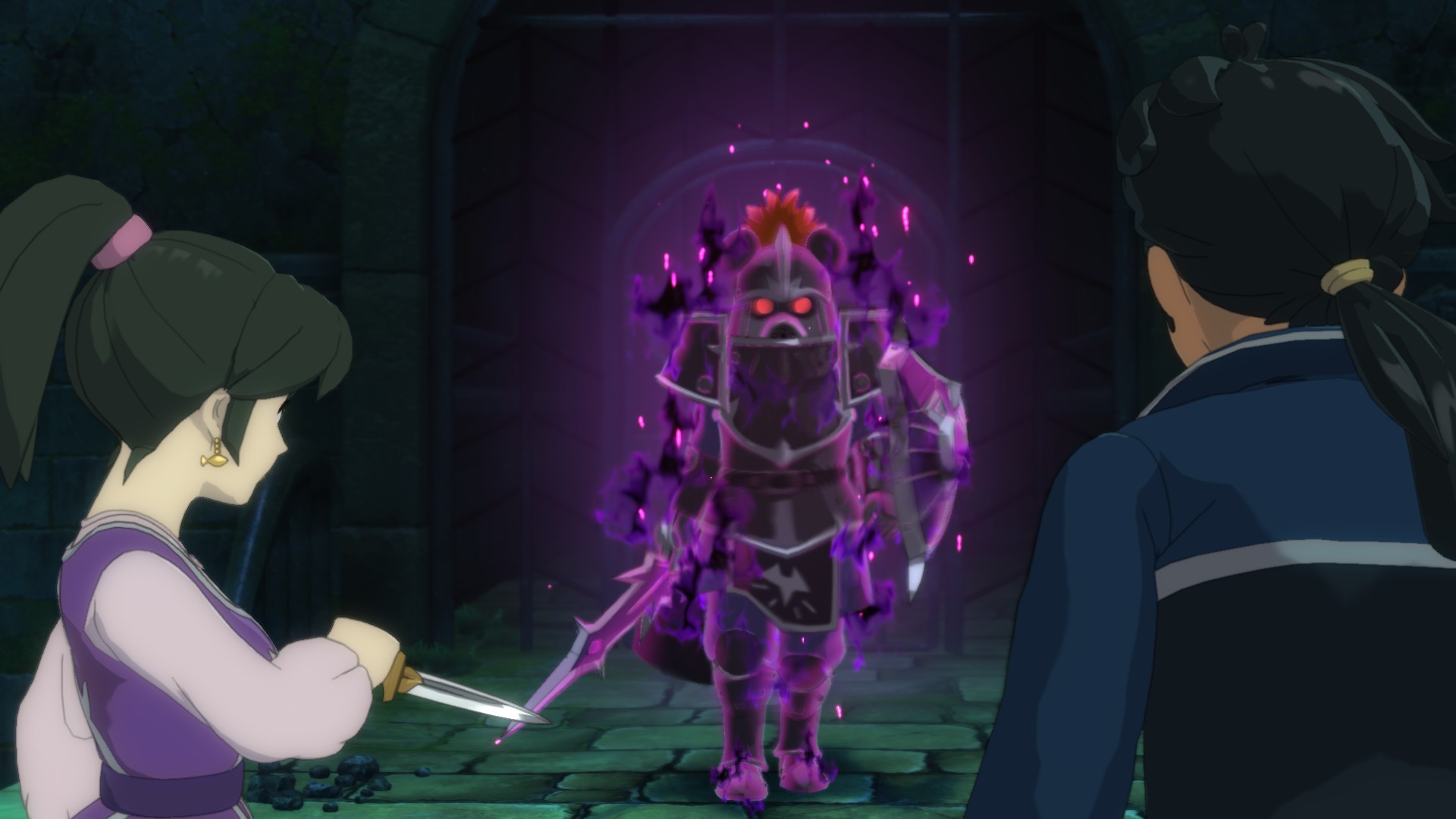
As with the original Ni No Kuni, the sequel feels like a very light-hearted fairy tale. Separated into chapters, it focuses on small stories toward the beginning, but expands into grand tales by the end. I enjoyed it from the very start.
It’s honestly refreshing to have a cheerful feel to the overall narrative, directly contrasting a lot of dark, gritty modern RPGs. I couldn’t help but get attached to the cast of characters, as well as their roles in the burgeoning narrative. With incredible voice acting adding to the experience, it’s easy to just sit back and be wowed by this game.
Throughout the story of Ni no Kuni II, I kept convincing myself that I’d only do one more chapter before taking a break. Of course, this was futile, and I’d find hours disappearing from my life while playing. It was an absolute joy to watch Evan growing from a young, scared child, to someone fit to rule a kingdom
With the immensely enjoyable moments come a few minor nitpicks, however. A couple moments of the story, specifically in the mid-game, felt rushed and could have benefited from a bit of fleshing out.
Maybe I was expecting a bit too much, but a few chapter endings felt rather abrupt. Additionally, there are some story segments that aren’t fully-voiced. While it doesn’t take away from the game too much, it would’ve been nice to have, obviously.
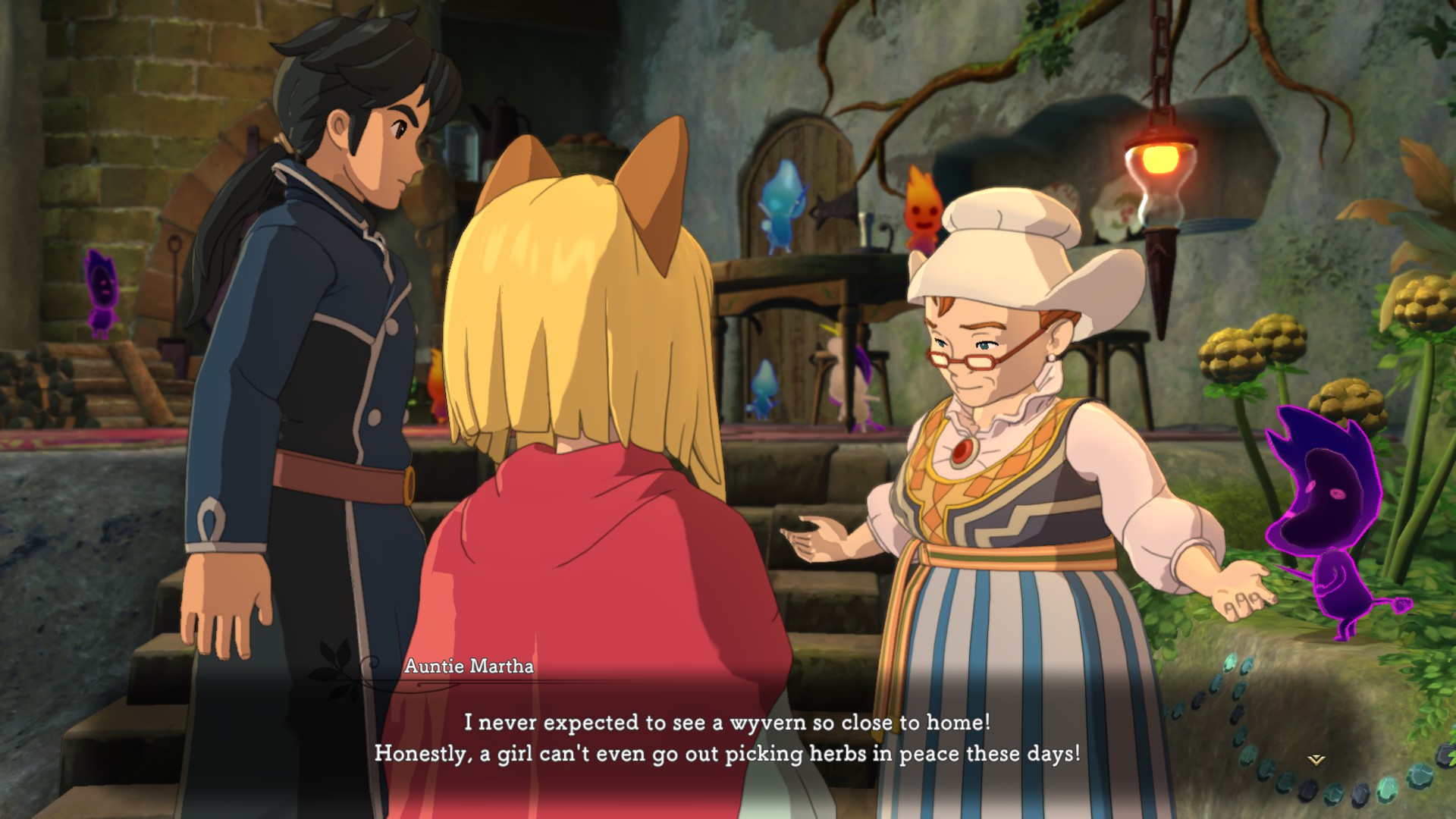
The visuals are great, and I think they’ll look amazing for years to come. Characters are cel-shaded, and honestly look as if they were ripped directly from a movie.
The designs of the main characters and NPCs, whether they be monsters, humans, or many of the other races, have had special attention paid to their designs and details. Animations are also very smooth for friends and foe alike, never seeming stiff or out-of-place in my time with the game.
Maps aren’t overly-cluttered, and terrain textures have a painterly look to them. There is a fantastic balance between the robust world and the characters occupying it that just makes the game pop.
The cities have a lot of detail, and each one looks fairly unique in its own right. From a classical fantasy kingdom, an Asian-styled gambling district, even a mechanical tower with a mix of past and futuristic technology, each of the locations are well thought out and are wonderful to behold.
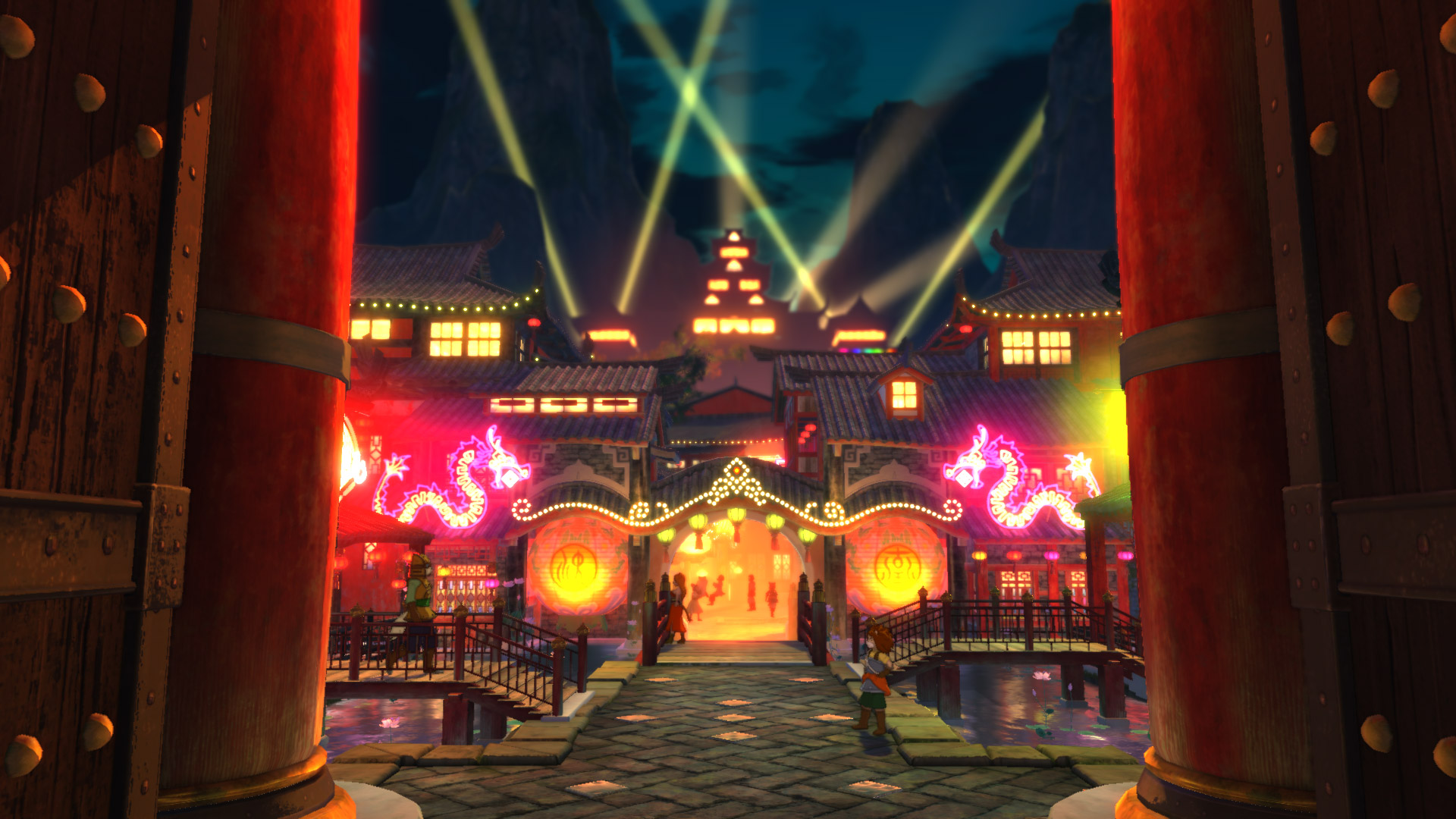
Even the world map has a lot of detail, with a large draw distance to give you a brilliant lay of the land. The smart design of the world map allows for hidden areas for you to find. It’s wonderful, and kind of a throwback to classic 16 or 32 bit RPGS with a nice touch of the modern era. The characters are swapped for chibi versions of themselves, but the monsters look roughly the same as usual, which is kinda weird. But it’s not that big of a distraction.
Joe Hisaishi returns to compose the orchestral musical score and is brilliant as ever. The score has the uncanny ability to make me feel emotional just by hearing certain tracks, and fits what’s going on in the game perfectly. I genuinely loved the world map theme, and never once got tired of the battle theme. Simply put, the soundtrack is nothing short of fantastic. It’s just as good as the first game’s, if not better.
The original Ni no Kuni combat system is gone, replaced by an action RPG sort of affair–and honestly, the series is better for it. Fights have become more exciting, with a maximum of 3 characters versus a potential 10+ foes. The pace of battle isn’t too slow or too quick, and never felt too repetitive during my time with the game.
Without spoiling anything, major boss battles all had some interesting mechanics to change things up a bit, and were fairly memorable. It was a bit too easy, though, and I only died to anything a higher level than me once in my entire playthrough.
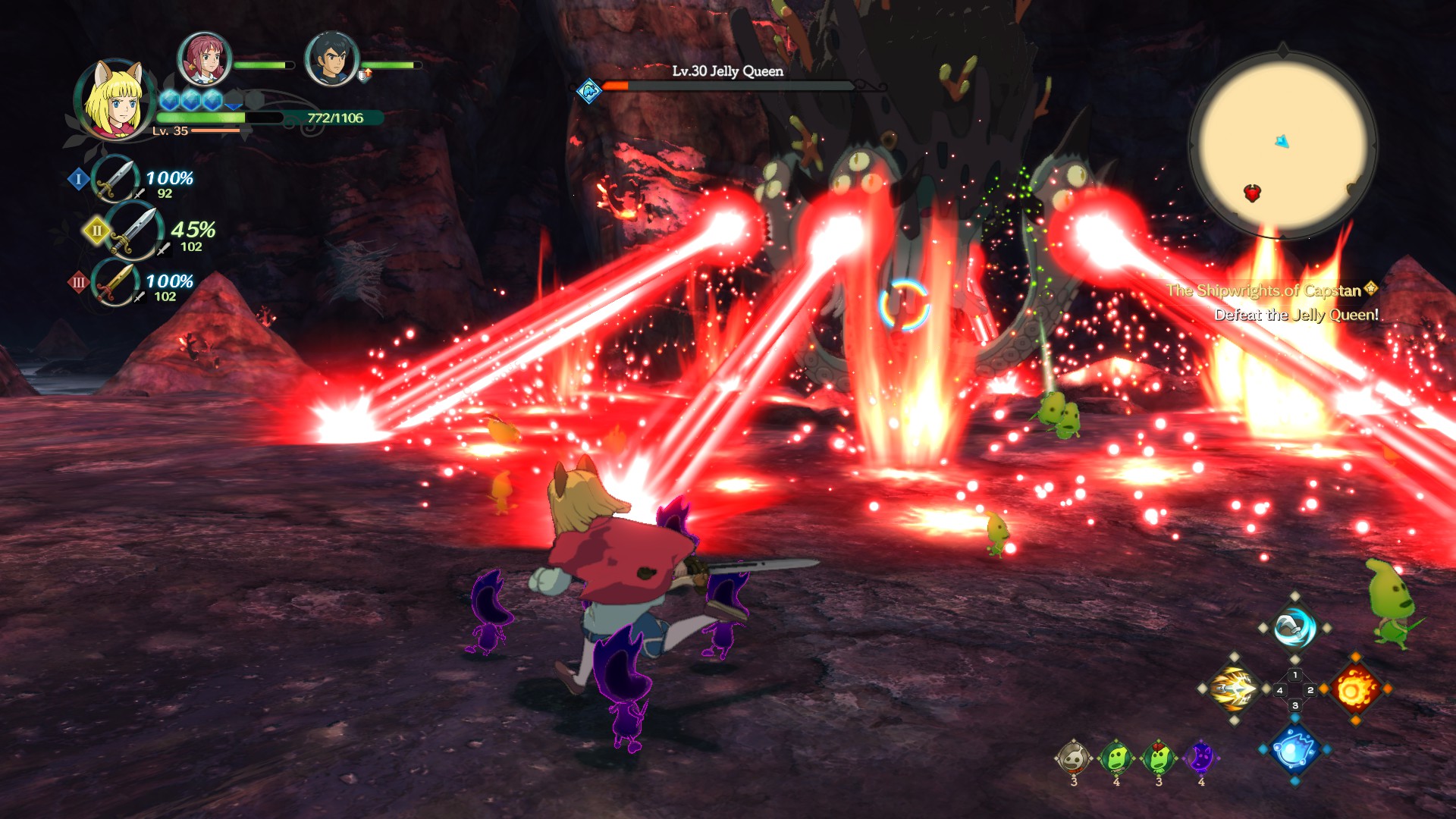
Melee combat consists of your standard hacking, slashing, blocking, and dodging. Interestingly, MP is regenerated via melee attacks, and can be used for ranged attacks as well as specific character skills.
To add more depth to combat, Ni no Kuni II adds Higgledies, little spirits who can cast spells, lay turrets, and assist in battle. XP and something called Battle Points are gained from fighting, which can be spent on something called the Tactics Tweaker for more customization in battle.
At the end of the day, though, the focal point of the game is building your kingdom. All aspects such as story, gameplay, building elements, and extra content all relate to the central theme of becoming more powerful and bringing peace to the world.
Building things up is really fun, and I found myself spending way more time than necessary avoiding the story and doing side quests. Getting new citizens for the kingdom, battling in army skirmishes, and upgrading my kingdom to enhance the playable characters really sucked me in.
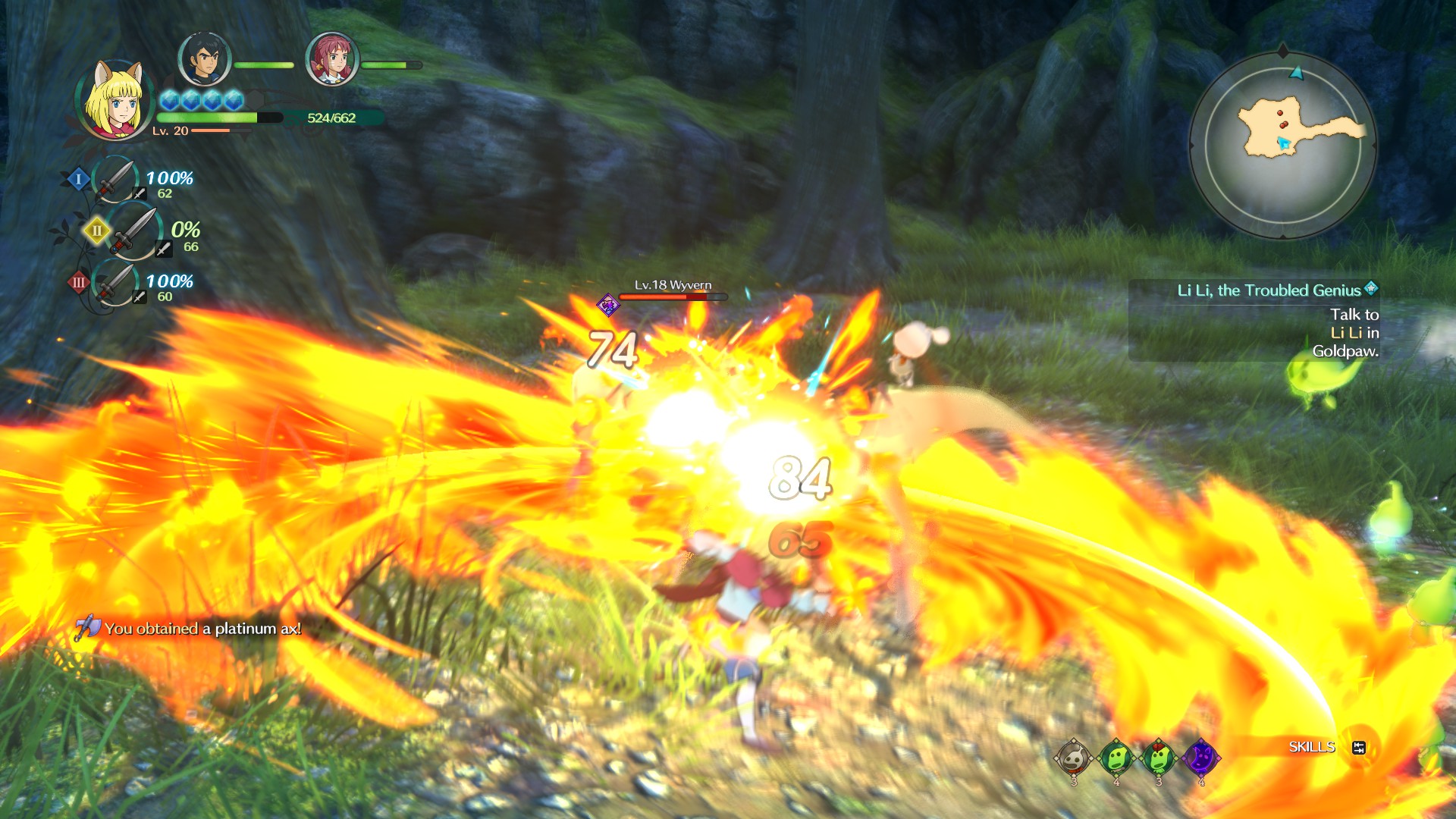
When it’s unlocked, you’re able to construct and upgrade your castle and buildings within your kingdom. This is possibly one of the most important things you can do to increase the effectiveness of your playable characters.
Through research that can only be done through the development of your kingdom, you are able to craft powerful weapons and armor, gain passive abilities, create and level more powerful Higgledies, and upgrade abilities. The progression this provides is nice, but creates one of the game’s only major issues.
At the start, building your kingdom feels more like a game on a cell phone platform. Not only is there a cap for how much money and research for your kingdom you can have at one time, they’re all generated as you play the game. Granted, the game does give you a ton of side quests to do to hold you off from progressing in the game while building your kingdom.
Still, at the start of the game it felt very slow for quite some time until I upgraded my castle to level two, to which it got even faster at three or four. The burden of waiting is lessened quite a bit later on in the game as you can research passive abilities for your kingdom, all of which make everything progress faster as well.
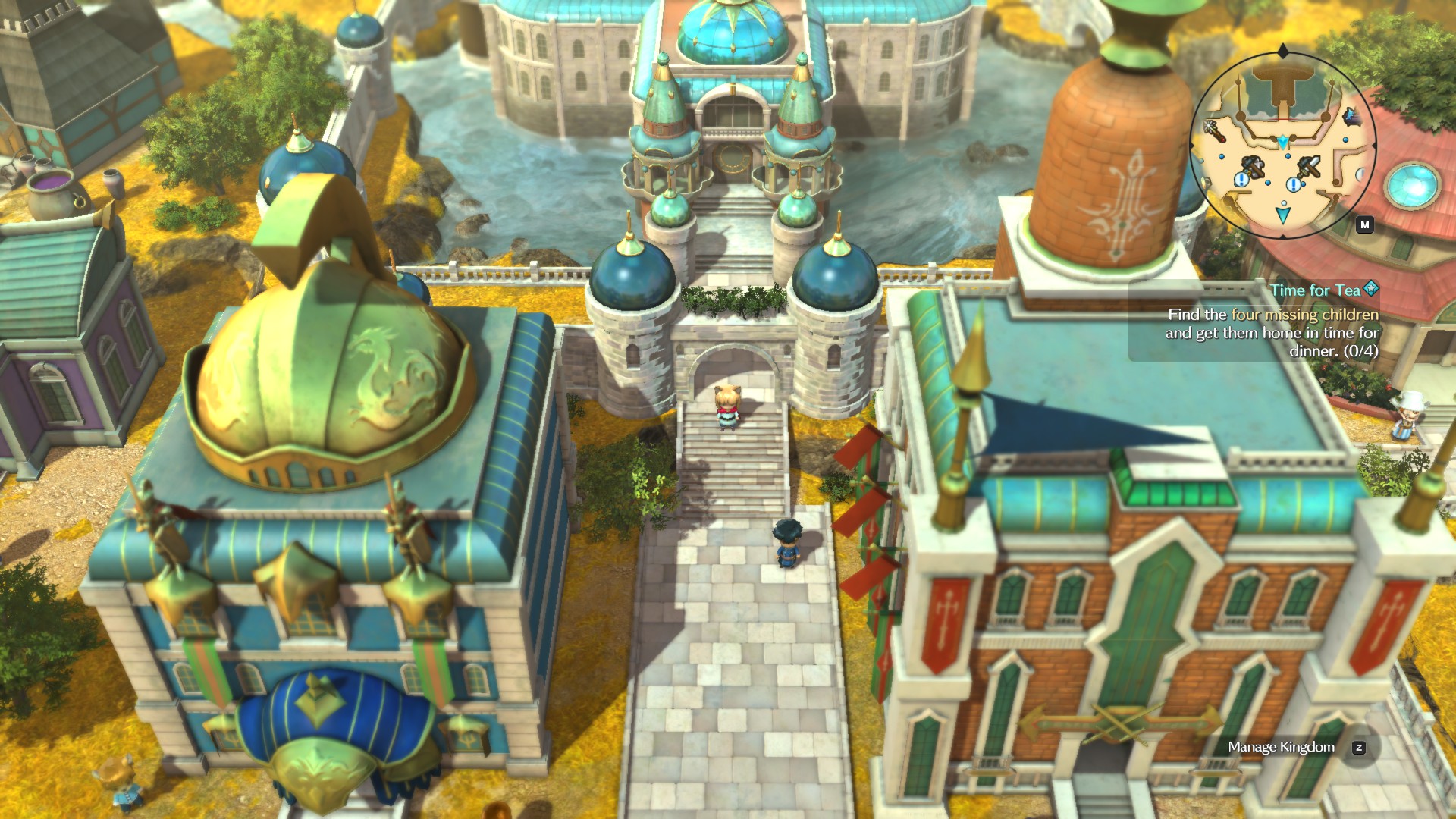
During the story and side quests you are able to recruit more people to join your kingdom and it is imperative to get as many as possible. Each one has stats and skills of their own that allows you to advance the growth of your kingdom.
While quite often recruiting involves just talking to people or turning in a small amount of quests, few and far in between some of the best side quests come from recruiting others. These give more perspective about the people, struggles, and the mysticism of the world and were just a treat.
Fans of the RPG series Suikoden will be at home with the recruiting, even if it’s not as in depth and the characters are not as interesting or memorable, while fans of the series will feel right and home.
Last but not least is skirmishes, a small real time action action game that can be quite fun. Usually ending up as one of the harder parts of the game, it uses up to 4 squads coming from some of the citizens you engage in light tactical fights that utilise paper rock scissor elements lightly.
While moving around the world map, you’re able to rotate the squads around your main character to fight waves of enemies, destroy towers and cannons to rebuild into your own faction, take over key points, or defend your territory.
Different characters have different abilities in your struggle. While the majority of these have been optional and often overlooked for myself, A few were mandatory as a part of the story.
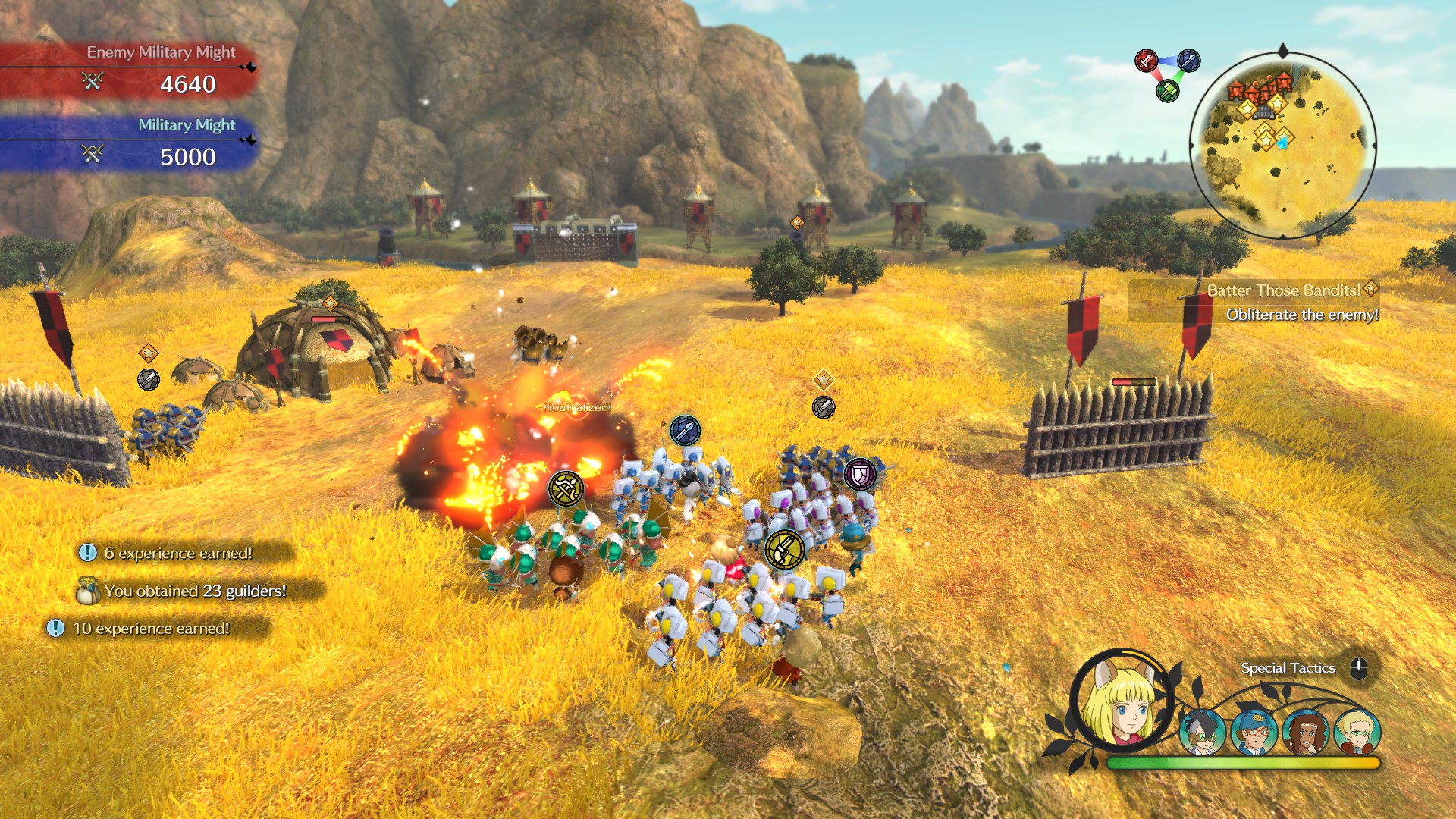
Every element together adds so much more to the game. It’s all harmonious to the plot and nothing really takes away from the overall theme. I find myself quite often avoiding the main plot to just do side activities and becoming far more powerful than what was really required.
Thankfully I did not encounter single disrupting bug or crash during my gameplay which made it all the better. The sound and story all work well together and make the world of Ni no Kuni II an enjoyable experience.
Only once did I ever encounter something that would be considered an error with the game. A single word got cut out of a voice dialog from a shop owner NPC at the tail end of a sentence. I had to run back to double check as it took me a moment to even notice.
Playing it on my PC was fantastic and I can only believe that it will be just as well on the PlayStation 4. For both fans of the first game as well as new players interested in it, I cannot recommend Ni no Kuni IIL Revenant Kingdom enough.
The main cast, the plot, the music, and the visual styles will be memorable for years to come. Even with what I believe to be one misstep and some minor quirks, it’s not hard to love this title and it’s definitely one I will be proud to own for years to come.
Ni no Kuni II: Revenant Kingdom was reviewed on PC using a review copy provided by Bandai Namco. You can find additional information about Niche Gamer’s review/ethics policy here.
The Verdict: 9.5
The Good
- Great story with a great cast of characters.
- Wonderfully composed orchestrated soundtrack.
- Great graphics and smooth animation.
- Tons of side quests and things to do to distract you from the plot.
- Combat never felt like a chore or was boring.
The Bad
- Some chapters feel they can be fleshed out more or ended too quickly.
- Start of Kingdom Bulding was slow.
- Quite a bit on the easy side.
Update
Due to my own oversight, I forgot to post my PC specs I ran this on my mid level home machine with a upgraded video card. The game was run at both Mid level and high level graphics to test stability during play. I apologize for the mistake, they are as follows:
- Operating System: Windows 10 Pro 64-bit (10.0, build 16299)
- CPU: AMD Phenom 2 X6 1100T (6 CPU), 3.3GHZ
- Motherboard: Asus Crosshair IV Formula
- Video Card: EVGA NVIDIA GeForce GTX 1080
- Memory: 12GB DDR3
- Storage: 500gb Western Digital Blue SSD
